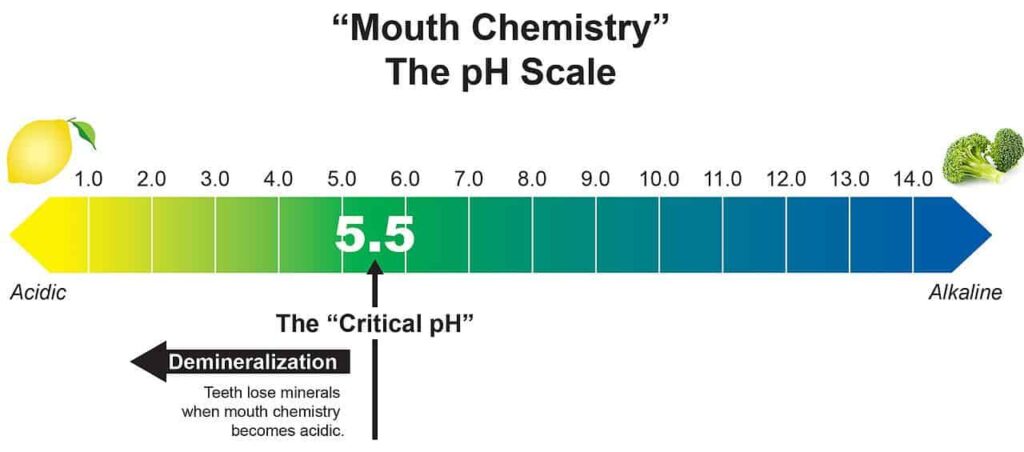Is Green Tea Alkaline or Acidic? The pH Truth You Need to Know
 / Discover more like this here: https://stylevitally.com/is-green-tea-alkaline-or-acid/?feed_id=4559&_unique_id=655189b5e30e6
/ Discover more like this here: https://stylevitally.com/is-green-tea-alkaline-or-acid/?feed_id=4559&_unique_id=655189b5e30e6
Introduction
Welcome to the world of green tea, where we'll unravel the mystery behind its pH level and whether it leans towards being alkaline or acidic. Understanding the pH of green tea is not only intriguing but also essential for making informed choices about our daily beverages.
Now, common misconceptions often lead people to believe that all teas are uniformly acidic. The truth is not all teas are created equal in terms of their pH levels. Here, we aim to dispel these misconceptions and delve into the scientific reality.
The central question we'll address throughout this article is, "Is green tea alkaline or acid?" Let's uncover the secrets of green tea's pH and its impact on health and well-being.
Understanding pH and Acidity
In our quest to unravel the pH mystery of green tea, it's essential first to grasp the concept of pH and its profound significance. pH is a numerical scale that measures the Acidity or alkalinity of a substance. It plays a pivotal role in determining whether a particular meaning is more on the acidic side, the alkaline side, or somewhere in between.
The pH scale is our trusty guide in this journey. It spans from 0 to 14, where 0 represents the most acidic substances and 14 stands for the most alkaline or basic ones. Simply put, a pH of 7 is considered neutral, neither acidic nor alkaline. Now, what's the ideal pH level for beverages to ensure they won't harm our precious teeth? The answer lies around 5.5. This is the magical threshold beyond which drinks become safer for our dental enamel, making it a significant parameter to keep in mind when evaluating the impact of green tea on oral health.
The study conducted by the British Dental Journal revealed an intriguing fact - pH levels bounced back to their normal range within a mere two minutes following the consumption of black tea. Such a swift recovery hardly provides sufficient time for any potential damage to occur.
The Acidity Levels of Different Teas

As we venture into tea and its pH intricacies, we must acknowledge that not all teas are cut from the same cloth regarding pH levels. The Acidity or alkalinity of tea is, in fact, quite diverse and depends on various factors.
Let's start by comparing the pH levels of different tea types. Green tea, often known for its health benefits, boasts a pH range typically between 7 and 10. This places it on the milder, more alkaline side of the pH spectrum. On the other hand, black tea leans slightly more towards the acidic side, with a pH range of approximately 4.9 to 5.5.
The fascinating diversity doesn't stop there; herbal teas, like chamomile and mint, usually register a pH range of 6 to 7. In contrast, citrusy lemon tea stands out as more acidic, with a pH of 3, while rosehip and blackberry teas can be as low as 2 to 3 on the pH scale. The world of teas encompasses a spectrum of acidity levels, with green tea as one of the more alkaline options.
The "safe" pH level of drinks that won't cause tooth damage is considered 5.5.
Tea Type
| Tea Type | Average Acidity Level (pH) |
|---|---|
| Black Tea | 4.9 - 5.5 |
| Green Tea | 7 - 10 |
| Oolong Tea | 5.5 - 7 |
| White Tea | 8 - 10 |
Type of Herbal Tea
| Herbal Tea | Average Acidity Level (pH) |
|---|---|
| Peppermint Tea | 6 - 7 |
| Camomile Tea | 6 - 7 |
| Rooibos Tea | 6 - 7 |
| Hibiscus Tea | 6.5 - 6.8 |
| Lemongrass Tea | 5.8 - 6.3 |
| Chrysanthemum Tea | 7 - 7.4 |
| Ginger Tea | 7 - 7.5 |
pH of Popular Teas
| Tea | Average pH level |
|---|---|
| Black | 4.9-5.5 |
| Green | 7-10 |
| Chamomile, Mint, Fennel | 6-7 |
| Lemon | 3 |
| Rosehip, Blackberry | 2-3 |
Factors Influencing Green Tea's pH
Understanding the pH of green tea isn't just about the type of tea itself; various factors come into play, shaping its ultimate Acidity or alkalinity. One of the primary factors is the processing method. Different types of green tea may undergo distinct processing techniques, which can impact their pH levels. Some leaves naturally contain more Acidity, contributing to a lower pH, while others lean towards the alkaline side.
The brewing time also plays a significant role in determining green tea's pH. The longer the tea leaves steep, the more acidic the resulting brew. This means that by adjusting your brewing time, you can influence the Acidity of your green tea to a certain extent.
Additionally, additives like milk can alter the pH of your green tea. Milk is an alkaline beverage, so adding it to your tea can raise its pH, making it less acidic. It's worth noting that even within green tea, there can be variations. Different brands and sources of green tea may have slightly varying pH levels, further emphasizing the importance of understanding the specific tea you're consuming. This variance highlights the complex interplay of factors that contribute to the pH of your green tea, making it an intriguing subject of exploration for tea enthusiasts.
Health Implications of Green Tea's Acidity
The pH of green tea has a direct bearing on our health and well-being. It's not just a matter of curiosity; understanding the implications of its Acidity is crucial. Consuming acidic beverages, including green tea, can have potential health effects, and it's essential to navigate this terrain with care.
One of the primary concerns regarding the Acidity of green tea is its impact on dental health. Research indicates that beverages with lower pH levels can be erosive to tooth enamel. While green tea generally falls within the milder range of Acidity, it's still important to exercise caution, especially if you have sensitive teeth. The good news is that the British Dental Journal suggests that pH levels tend to be restored about two minutes after drinking black tea, which is often similar to green tea. This rapid recovery minimizes the risk of long-term damage to tooth enamel.
Beyond dental health, highly acidic foods or beverages may theoretically contribute to gastrointestinal distress. While these claims are still largely theoretical, they are worth considering when evaluating the effects of green tea's Acidity on overall health. So, as we venture further into our exploration of green tea's pH, it's essential to weigh these potential health implications while still relishing the many benefits this remarkable beverage has to offer.
Balancing Green Tea's Acidity
When it comes to enjoying green tea while minimizing its Acidity, there's a simple and effective solution - using alkaline water for brewing. This minor adjustment can make a significant difference in the overall pH of your tea. Alkaline water is characterized by a pH above 7, making it less acidic and more alkaline.
By brewing your green tea with alkaline water, you can effectively raise its pH level, reducing its Acidity. This not only makes the tea gentler on your teeth but also enhances its overall health benefits. Alkaline water contains healthy minerals like calcium, potassium, and magnesium. These minerals can help neutralize the body's pH and support better hydration.
Improved hydration is a notable advantage of alkaline water for brewing green tea. Hydration is essential for overall well-being, and alkaline water's advanced hydrating qualities can contribute to better health. In summary, by incorporating alkaline water into your green tea preparation, you not only balance the tea's Acidity but also promote improved hydration and overall health benefits.
Is Green Tea Alkaline or Acid?

Green tea, a beloved beverage known for its numerous health benefits, falls within a unique spot on the pH scale. When we ask the question, "Is green tea alkaline or acid?" the answer is not a straightforward one. The pH scale, which ranges from 0 (most acidic) to 14 (most alkaline), is used to determine the Acidity or alkalinity of substances. Green tea typically occupies a pH range of 7 to 10, leaning more towards the alkaline side of the scale.
Comparing this to other common teas, such as black tea, which usually has a pH of 4.9 to 5.5, green tea is notably milder in terms of Acidity. This softer Acidity makes green tea a preferred choice for those concerned about its potential impact on dental health. While it's not entirely free from Acidity, it's generally less harmful to tooth enamel than more acidic teas.
In summary, the question of whether green tea is alkaline or acidic leads us to the conclusion that green tea falls on the alkaline side of the pH scale, making it a more tooth-friendly choice compared to some other teas. Enjoy your green tea, knowing it provides a harmonious balance of flavor and well-being.
Comparing Green Tea to Other Teas

To uncover whether green tea is alkaline or acidic, we must compare its pH with other common tea types, such as black tea. Green tea, renowned for its health benefits, distinguishes itself with its pH level. While the pH of black tea typically falls in the range of 4.9 to 5.5, making it moderately acidic, green tea boasts a milder pH range of 7 to 10, leaning towards the alkaline side of the spectrum.
What sets green tea apart is not just its pH but also its unique qualities. Its relatively higher alkalinity makes it a more tooth-friendly choice than other teas. While the Acidity of black tea can pose a risk to dental enamel, green tea's pH is generally less harmful to your teeth. This attribute is one of the potential benefits that make green tea a preferred choice for those who want to enjoy the pleasures of tea without compromising their oral health.
In summary, green tea's pH sets it apart from other common teas like black tea. Its milder Acidity, leaning towards alkalinity, makes it an attractive choice for those looking to enjoy the soothing and healthful benefits of tea while minimizing potential dental concerns.
Summary and Conclusion
In this exploration of whether green tea is alkaline or acidic, we've delved into the fascinating world of pH levels and the impact they have on our beloved cup of tea. Here's a brief recap of our key findings:
- Green tea stands out with its pH range, generally between 7 and 10. This places it on the milder, more alkaline side of the pH spectrum, making it a safer choice for dental health than other teas, such as black tea.
- Various factors influence the pH of green tea, including the processing method, brewing time, and additives like milk. These elements can cause slight variations in the pH of different brands and sources of green tea.
- While there are theoretical links between the Acidity of foods and gastrointestinal distress, the evidence is still emerging, and further research is needed to establish concrete connections.
In conclusion, green tea is indeed more alkaline than acidic. If you're concerned about the Acidity of your tea, here are some recommendations: consider brewing green tea with alkaline water to raise its pH level, which can have additional health benefits like improved hydration. However, always remember that moderation is key, and regular dental check-ups are advisable to maintain your oral health. Enjoy your green tea, knowing it provides a harmonious balance of flavor and well-being.
Frequently Asked Questions
- Is green tea alkaline or acid for acid reflux?
Green tea is generally considered a good choice for those dealing with acid reflux or heartburn. With a pH ranging from 7 to 10, it is more alkaline, making it less likely to trigger acid reflux symptoms than highly acidic beverages. However, individual reactions can vary, so it's advisable to monitor your body's response and adjust your tea consumption accordingly.
- What is the pH of green tea?
The pH of green tea typically falls within the range of 7 to 10, leaning towards the alkaline side of the pH scale. This makes green tea milder in terms of Acidity than beverages with lower pH levels.
- Is green tea acidic like coffee?
No, green tea is generally less acidic than coffee. Coffee typically has a pH of around 5.35, whereas green tea's pH range is 7 to 10, making it milder in Acidity.
- What is the pH level of Lipton green tea?
The pH level of Lipton green tea may vary slightly depending on factors such as brewing time and additives like lemon or honey. However, Lipton green tea typically falls within the pH range of 7 to 10, similar to other green teas.
- Is black tea alkaline?
Black tea is moderately acidic, with a pH range of 4.9 to 5.5. It is more acidic than green tea and leans more towards the acidic side of the pH scale.
- Is chamomile tea acidic?
Chamomile tea typically falls within a pH range of 6 to 7, making it mildly acidic. While it is not as acidic as some other beverages, it is not as alkaline as green tea.
- Is milk tea acidic?
The Acidity of milk tea can vary depending on factors such as the type of tea used and the amount of milk added. In general, milk tea tends to be mildly acidic due to the tea's pH, but the addition of milk can slightly raise the pH level.
- Is ginger tea acidic?
Ginger tea is mildly acidic, with a pH typically ranging from 7 to 7.5. While it is not highly acidic, it is not as alkaline as green tea. Ginger tea is known for its potential digestive benefits and is generally well-tolerated by most individuals.
https://stylevitally.com/is-green-tea-alkaline-or-acid/?feed_id=4559&_unique_id=655189b5e30e6
Comments
Post a Comment